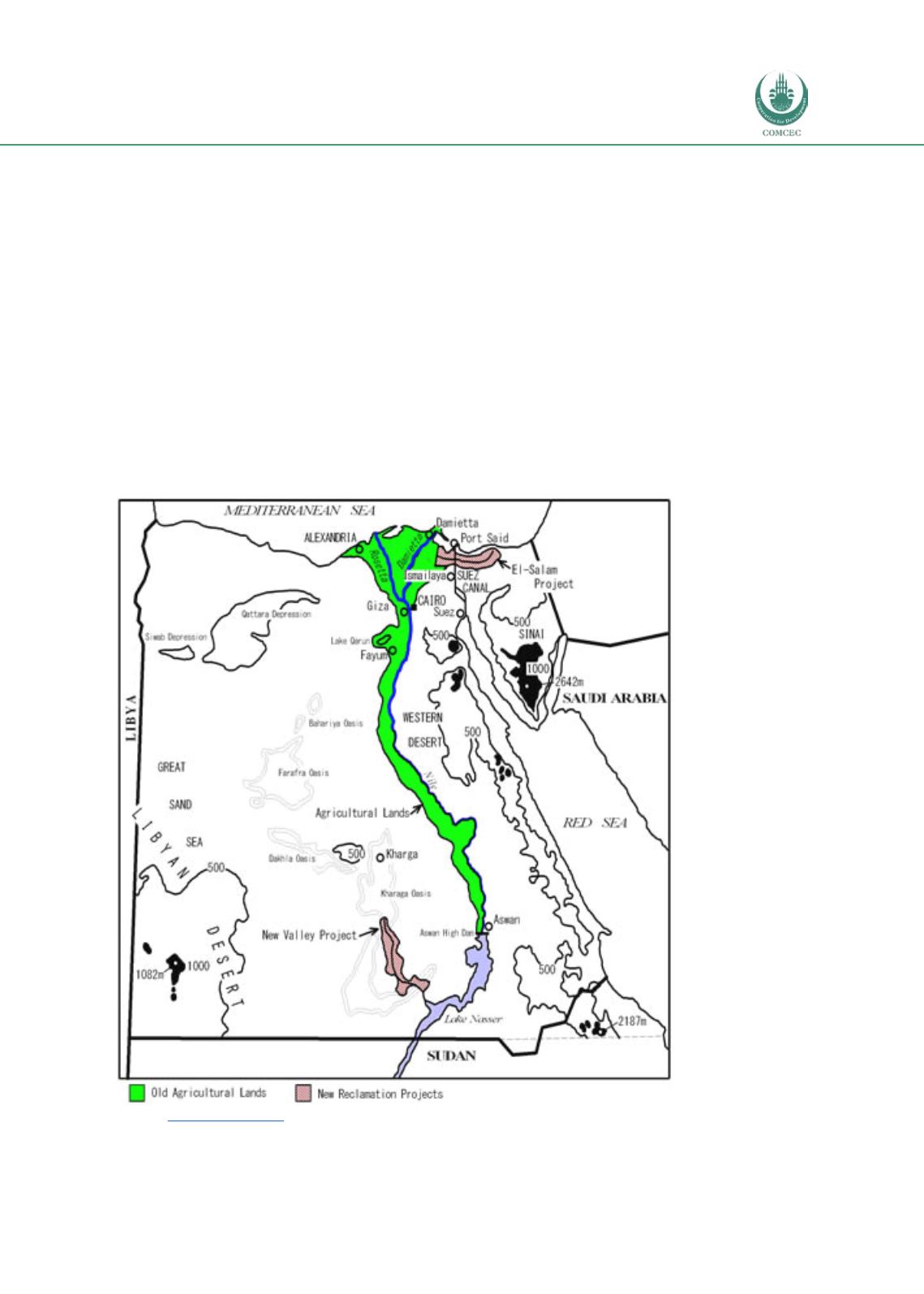

Improving Agricultural Market Performance:
Developing Agricultural Market Information Systems
69
5.
EGYPT CASE STUDY
5.1
INTRODUCTION AND BACKGROUND
Egypt is an important producer, consumer and exporter of agricultural goods. Agricultural
production in highly concentrated in irrigable zones along the Nile River and in irrigation
schemes (Figure 28). Agriculture contributes around 16% to GDP and employs about 34% of all
labour. Production is largely intensive using irrigation. Egypt’s climate allows for three annual
crops making it potentially highly productive. The agricultural sector is quite diverse. By value,
vegetables are by far the largest crop followed by wheat, maize rice and fruits (see Table 6).
Livestock production for meat and milk is substantial and involves producers of all scales.
However, Egypt is a net food importer with notable shortfalls in the domestic wheat production
with the supply gap filled by means of imports. Also imported are vegetable oils and many other
food products (WTO, 2005).
Figure 28: Map of Agricultural Land in Egypt
Source:
www.ipipotash.org

















